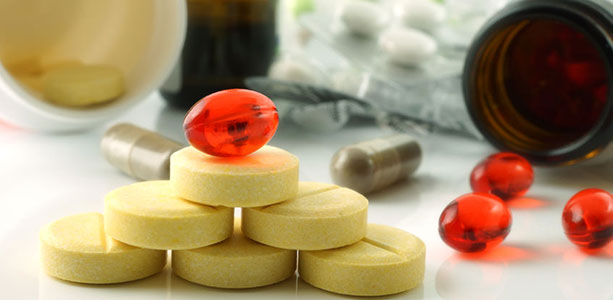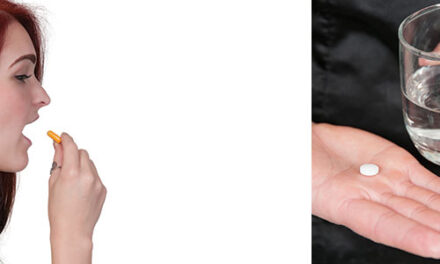Controversy is no stranger to vitamins and herbs, albeit there are periods of more and of less attention. Popular news sources recently have been making much of a couple of issues: To start, there has been a regular drumbeat regarding the uselessness of vitamins, either alone or in combination, for either preserving or improving health. Multi-vitamin/mineral supplements are common targets, but so are vitamins such as vitamin D and a number of popular herbs. Next, we are warned routinely of possible interactions between various supplements, especially herbal extracts, and prescription drugs. In particular, blood-thinning medications and certain immuno-suppressants used to treat HIV have been emphasized as being incompatible with a number of popular plant products, including St. John’s wort and Chinese ginseng. Both sets of issues are real, to be sure, and need to be considered for safety’s sake. Nevertheless, the ensuing controversy over supplements is perhaps just as important for what it reveals about American dietary and other habits as for what it reveals about the safety of vitamins and herbs.
In point of fact, many common foods have as great or greater an impact upon numerous medical conditions as do the vitamins and herbs that have been singled out. Examples of this will be given shortly. In considering these examples, the reader should be aware they are not exhaustive. They are being offered as evidence for a number of points worth pondering. First, what is revealed by the current focus upon the medical interactions of popular supplements? Second, if quite a number of foods pose the threat of similar interactions, does a lack of focus on or concern with dietary factors suggest that the diet of the average American is highly restricted in terms of food choices? Third, is it the case that many conditions for which drugs are readily prescribed for chronic use in this culture might be better treated by simple changes in the diet and/or the use, as first choice, of vitamins, herbs and other supplements which have negligible side effects?
Vitamin D One More Time
TotalHealth magazine over the past few years has been vigilant in examining controversial attacks on vitamin supplements and it is disappointing to many of us that wrong-headed analyses continue to be picked up and presented uncritically by both professional journals and the popular press. USA Today (January 23, 2014) is a good example of this as it states unambiguously that studies and reviews of vitamin D have found no “significant benefits for heart health, cancer prevention or even bone health in healthy people.” The journal article that prompted these comments, large meta-analysis just published in the British medical journal Lancet is blunt in its assessment of vitamin D:1 “Available evidence does not lend support to vitamin D supplementation and it is very unlikely that the results of a future single randomized clinical trial will materially alter the results from current meta-analyses.”
The response from a number of primary vitamin D researchers to this and other recent meta-analyses has been withering. This includes the remarks of Dr. Michael Hollick, the scientist responsible for identifying the major circulating form of vitamin D in serum —25-hydroxyvitamin D3—which is the form of vitamin D measured medically to assess vitamin D status. Dr. Hollick terms the recent papers flawed and “silly.” Dr. Hollick’s views are reported by Dr. Mercola on his website which provides an elaborate critique of the recent vitamin D papers. Another researcher who roundly dismisses the recent studies is Dr. Cedric Garland of the University of California at San Diego Moore’s Cancer Center. His comments cover both the Lancet paper already mentioned and another recent meta-analysis:
This meta-analysis is nothing new and is already obsolete since it is mainly based on old papers that used too little vitamin D to expect any effect. A New Zealand study saying we should only supplement people with vitamin D deficiency and evidence of bone loss is equally wrong. Virtually everyone in New Zealand, and most adults in the U.S., are vitamin D deficient by modern criteria, being below 32 ng/ml.
The reality is that we now know that they are deficient with regard to extra-skeletal effects of 25(OH)D if their serum level is below 40 ng/ml. These papers should be disregarded as obsolete work. We are moving into a new era of using vitamin D3 in doses no less that 4,000 IU/day for people aged 9 years and older… Studies using less than 4,000 IU/day are on the verge of obsolescence.
In other words, the studies culled and used as the basis of the recent meta-analyses of vitamin D were themselves inadequate because designed around totally inadequate vitamin D daily dosages. Moreover, one does not need to look far for at least one very major review that disagrees with the conclusions of the negative meta-analyses in the most fundamental way. A Cochrane review published just this year on vitamin D and mortality gives an answer that seems more than sufficient to warrant another look at vitamin D, at least in its D3 form:2
Vitamin D3 seemed to decrease mortality in elderly people living independently or in institutional care. Vitamin D2, alfacalcidol and calcitriol had no statistically significant beneficial effects on mortality.
Blood Thinning Drugs
Another point of current controversy involves both vitamins/ vitamin-like compounds and various herbs. Many aging individuals are treated with anti-coagulants or “blood thinners” to reduce the risks of stroke and blood clots. One popularly prescribed such drug is Coumadin (warfarin). Drug interactions with any of the anticoagulants are quite common, including with such everyday items as alcohol and aspirin. The usual side effects involve too free bleeding and show up as such things as easy bruising, frequent nosebleeds, dark urine and tarry stools. Needless to say, excessive bleeding can be life-threatening under certain conditions. Interactions with anticoagulants are so common that some pharmaceutical experts caution against taking any new drug, including over-the- counter items such as aspirin, without first speaking with a doctor or pharmacist.
Ginkgo biloba extracts, particular examples of which in a number of clinical trials currently are being reaffirmed for cognitive health (but only in the case of certain extracts)3, possibly present a problem for those taking anticoagulant drugs largely because these extracts perform many of the same tasks as those drugs and much more. Ginkgo extracts improve the blood flow through the artery which serves the heart, improve circulation in the brain and more generally throughout the body, increase the clearance of toxins from the system, and protect the body against what is known as platelet-activating factor (PAF). PAF was only discovered in 1972, and since that time scientists have come to realize that it is involved in disturbances ranging from internal blood clots (often leading to heart attacks and strokes) to allergic reactions and asthma.4
Problems with excessively “sticky” blood are much more common in the United States than they are in many other countries around the world, such as in Japan. Diet appears to be by far and away the most significant factor in this. A quite large number of foods “thin” the blood. Food sources of omega-3 fatty acids, which include many cold-water ocean fish as well as walnuts and a few other items, all tend to increase clotting time. All members of the onion and garlic families act as blood thinners, especially if eaten regularly and in quantity. The same is true of the mo-er (black tree fungus) and reishi mushrooms, both of which can be purchased in markets, which carry specialty mushroom and Asian vegetables. Another natural blood thinner is hawthorn. Hawthorne, which is found primarily as an extract in this country, is the basis for some popular beverages in Asia and often taken as a tea in Europe. Red wine, especially if it is high in the antioxidant resveratrol, may increase coagulation time. The quinine found in tonic water will increase or prolong the actions of Coumadin and may have its own blood thinning effects. Grapefruit is notorious for reducing the clearance of warfarin-like compounds and therefore increasing the risk of hemorrhage.5,6
A great many herbs, spices and digestive aids can exercise significant anticoagulant effects. These include cayenne pepper, bromelain from eating pineapple fruit and stem, papain from papaya, and likely paprika and most chili peppers. Ginger root, which is eaten in quantity in Indian and Oriental cuisines, can strongly inhibit clotting. So can its relative, tumeric, which is used widely in curries and a source for purified curcumin. Vitamins and vitamin-like compounds, as mentioned above, can lead to similar problems. These compounds include vitamin E, tocotrienols, omega-3 fatty acids, lipoic acid and many more.
Both Chinese and Indian (Ayurvedic) medicine would greatly expand these lists of foods and herbs which can increase clotting time, but, even as things stand, it should be clear that diet likely is the predominant factor by far in determining the activity of several elements in the blood which control clotting time. Of course, there are at least as many dietary factors which can influence blood coagulation in opposition to Coumadin as those which are additive.
Changing the Rate of Drug Clearance
Many drugs (including some protease inhibitors, calcium channel blockers, and oral contraceptives) are metabolized by the cytochrome P450 3A4 (CYP3A4) metabolic pathway, which is active in the liver. Grapefruit has already been mentioned as influencing this pathway; it contains the compound naringenin, which is one of the most powerful of common compounds in affecting CYP3A4. The herbal supplements, which presently are the most strongly implicated are goldenseal (Hydrastis canadensis), St. John’s wort (Hypericum perforatum), and cat’s claw (Uncaria tomentosa).7 Black pepper extracts, similarly, influence cytochrome P450 and other elements involved in drug clearance.
The ability to zero-in on this enzyme system through special research techniques, unfortunately, in many ways is a bit misleading. How much difference does it make in practice whether the clearance of a drug is delayed as opposed to its absorption being greatly enhanced? Black pepper, cayenne pepper, ginger and long pepper all either strongly increase absorption of other compounds and/or influence cytochrome P450. Some sources of lecithin, such as eggs, may similarly increase the uptake of certain drugs. Alcohol typically enhances the effects of many drugs, whether by increasing absorption, producing its own additive effects, or delaying clearance.
Quite a remarkable number of items in the diet can interfere with many drugs. Some interfere directly with absorption, as do the tannins and fibers found in many fruits and vegetables. Others do so indirectly by activating overall metabolism, liver and/or kidney functions.
Why Look to Dietary Choices Last?
Herbs, of course, do have many powerful effects upon the body and should not be treated as if they are innocuous merely because they are “natural.” However, also missing in American culture at large is an awareness that it is relatively easy to intervene in many common conditions without resorting to prescription drugs. In point of fact, other than a quite narrow range public health messages regarding primarily fats and fiber in the diet, we do not tend to think of diet as having much of an impact upon health at all. There is no reservoir of knowledge in everyday American culture regarding the health uses of foods and herbs, unlike the cultures of Asia and even Europe. Moreover, the U.S. heavily subsidizes the growth and production of many foodstuffs used in “fast foods” (corn, wheat, sugar beets, etc.) while doing nothing to reduce the cost to consumers for fresh fruit and vegetables, i.e., items that are healthful rather than being merely sources of calories.
Indeed, there are entire classes of medications sold extremely widely in the United States for which there appears to be no need in many other cultures. One class which immediately comes to mind is that of the acid reflux / heartburn /antacid medications, whether over-the-counter or prescription. The entire notion that there are health problems stemming from the production of excess stomach acid is surely an odd one given the fact that we typically have no such problems when we are young and produce plenty of stomach acid, yet such problems in this culture are common in middle age and later, i.e., at the point at which the ability to produce stomach acid has already begun to decline markedly. What has really happened is that the muscle that closes off the top of the stomach and prevents its contents from flowing back up the esophagus has weakened. Items that reduce the production of stomach acid at the same time prevent the complete digestion of proteins in the stomach, but, again, do nothing to strengthen the muscle that controls acid reflux. Interestingly enough, acid reflux is virtually unknown in much of Asia where ginger is commonly used as a part of meals. Ginger just happens to strengthen the esophageal sphincter.
In truth, the American diet tends to be extremely narrow in the range of the foods eaten. “Fast foods” such as a burger and fries garnished with a little bit of cold slaw have become increasingly important sources of dinner and supper for the average American, and therefore it is hard to argue that our range of foods consumed daily is large. Some authorities estimate that one half of all meals are eaten outside the home, mostly at fast food restaurants. Aside from the obviously poor nutrition supplied by such choices, it is also the case that most of the otherwise readily available foods that might be used to influence many health conditions are either missing or very badly represented. We grow these foods, we just don’t eat them. Hence the observation by one Tibetan doctor to the effect that we seemed to have only two flavors in this culture, salty and sweet.8
This returns us to our starting point. Were the average American consuming a truly varied diet, the American medical profession likely would be more aware of the impact of foods upon health. Likewise, there is the curiously dichotomous thinking of many of those who are medically trained to the effect that herbs are either without any benefit, on the one hand, or likely to be a threat to prescribed pharmaceutical drugs, on the other hand. According to this way of thinking, items are either foods or drugs. Foods support the structure and functions of the body, whereas drugs intervene. As long as herbs could be seen as being without effect, they could be relegated largely to the foods category, i.e., at best innocuous and a waste of money in terms of health benefits. Once it is admitted that herbs might have benefits, they must be treated like drugs and viewed as possessing a host of powerful side effects and drug interactions.
The problem is that even everyday foods can have quite powerful effects upon the body. So why not make use of these food effects as a first line of treatment, herbs as a second line, and drugs only when all else fails?
References
- Reid IR, Bolland MJ, Grey A. Effects of vitamin D supplements on bone mineral density: a systematic review and meta-analysis. Lancet. 2014 Jan 11;383(9912):146-55.
- Bjelakovic G, Gluud LL, Nikolova D, Whitfield K, Wetterslev J, Simonetti RG, Bjelakovic M, Gluud C. Vitamin D supplementation for prevention of mortality in adults. Cochrane Database Syst Rev. 2014 Jan 10;1:CD007470.
- Lewis JE, Melillo AB, Tiozzo E, Chen L, Leonard S, Howell M, Diaz J, Gonzalez K, Woolger JM, Konefal J, Paterson E, Barnes D. A double-blind, randomized clinical trial of dietary supplementation on cognitive and immune functioning in healthy older adults. BMC Complement Altern Med. 2014 Feb 4;14(1):43.
- Murray, Michael T. “The Healing Power of Herbs,” 2nd edition (Prima Publishing, Rocklin, California: 1995.)
- Brinker, Francis. “Herb Contraindications and Drug Interactions.” Revised 2nd edition. (Eclectic Medical Publications, 1998.)
- Mindell, Earl and Hopkins, Virginia. “Prescription Alternatives.” (Keats Publishing, 1998.)
- Budzinski JW, Foster BC, Vandenhoek S, Arnason JT. An in vitro evaluation of human cytochrome P450 3A4 inhibition by selected commercial herbal extracts and tinctures. Phytomedicine. 2000;7(4):273-82.
- Yeshi Donden. “Health Through Balance.” Snow Lion Publications, 1986.)











